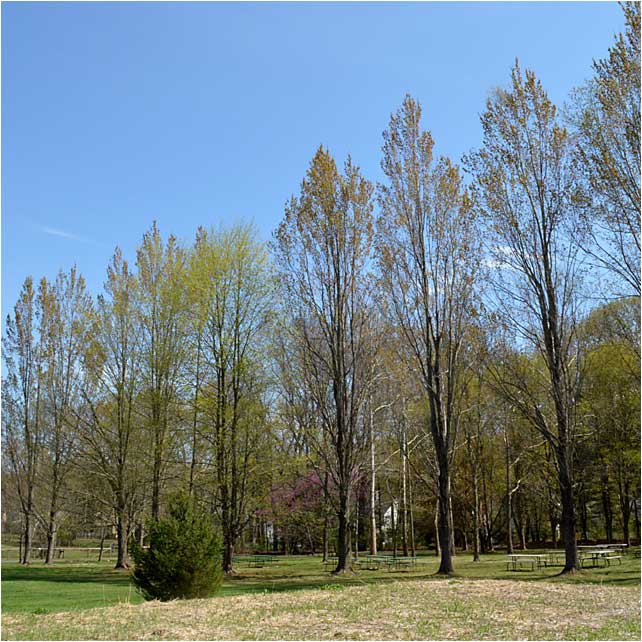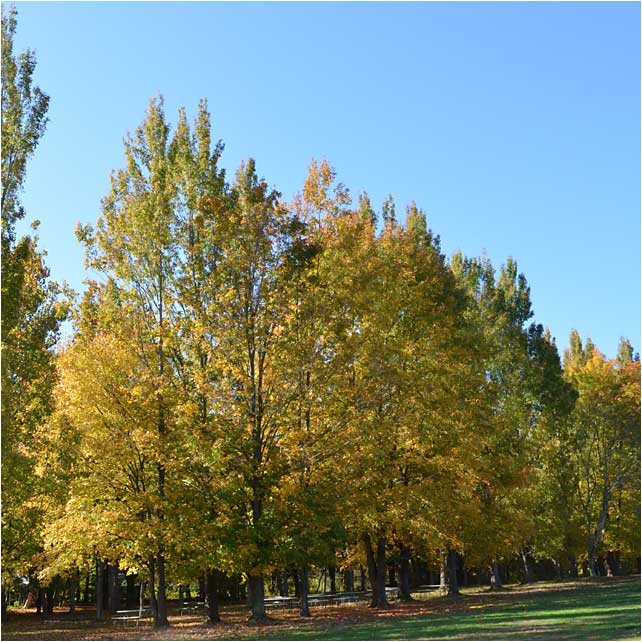34. THE GROVE, multiple species

A bit of Westmoor property history. West Hartford town records indicate the land was farmed from the very late 1600s to well into the 1900s. Nearly all of the property was cleared land. In 1934, the entire state of CT was photographed from the air, and this photo shows us the land Westmoor Park was built on. It's easy to see the building that is the current Visitor Center, and parts of the barn and farm area. The area in Westmoor we call THE GROVE is completely devoid of trees in 1934...
THE GROVE, WINTER

Today, THE GROVE is a stand of multi-species of trees but nearly all of them were planted symmetrically, and all of them since 1934. The Park is not sure just when any of the species were actually planted, but we know the land was sold at foreclosure in 1939 - so probably some time after that. The anecdotal story is WH municipal government planted the trees here "temporarily" to be transplanted to other parks and streets at some future time. They are still here in 2023.
SPRING, THE GROVE

This is the Spring view of the planted rows... All of the trees in THE GROVE are also covered individually in this Arboretum Trail. If you want more info on any species, please follow the link(s). Red Maple was planted in this first line. The interior section pictured here has both Honey Locust and American Sycamore. Honey Locust has been planted for many years in public areas of West Hartford, so that make sense. Not so sure with American Sycamore as they tend to be very large trees.
SUMMER, THE GROVE

As you can see, THE GROVE is a shady, welcoming space during the summer, and our camp counselors and guests spend a lot of time here. The interesting part of this area, botanically, is that you get to see how trees grow in a tightly grouped environment. All of the trees here are examples of trees grown in "forest" environments as opposed to open "field" environments. There is significant competition for light, water, and nutrient resources.
FALL, THE GROVE

As the leaves begin to drop, you once again see the symmetrical planting characteristic of THE GROVE. Over the next several decades, parts of THE GROVE will change dramatically. The Honey Locust trees do not like the shade thrown by the larger trees, and the American Sycamores may not have enough room. Plus, Red Bud is already claiming new ground, and the Maples will be aggressive if allowed to spread.